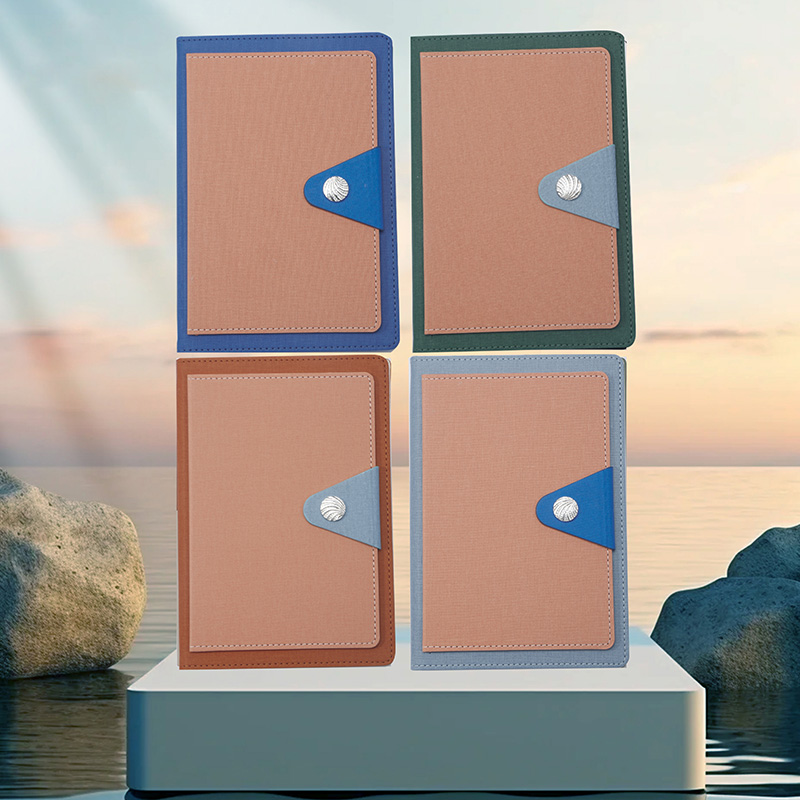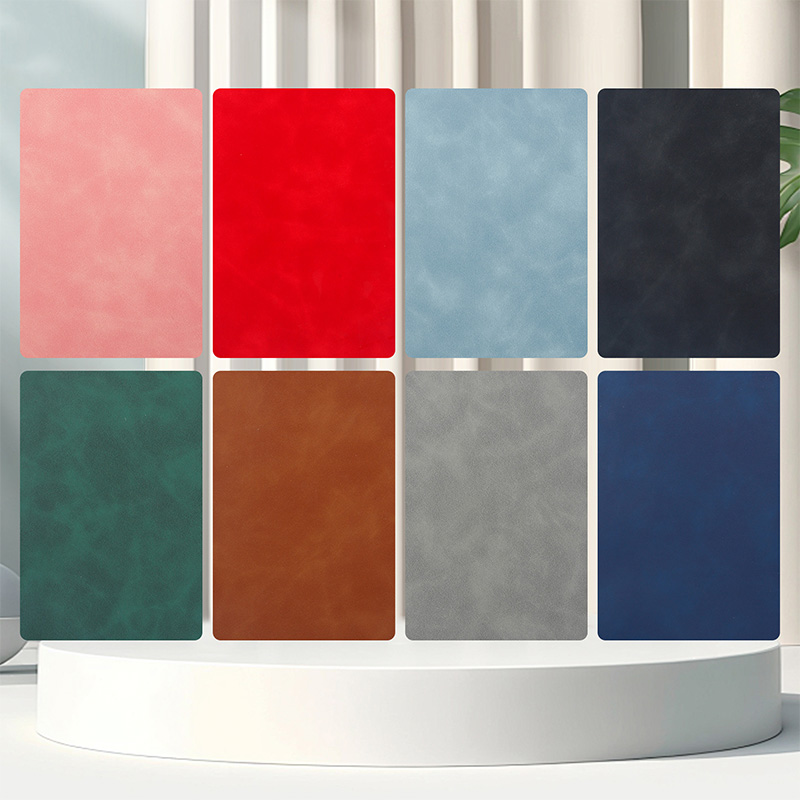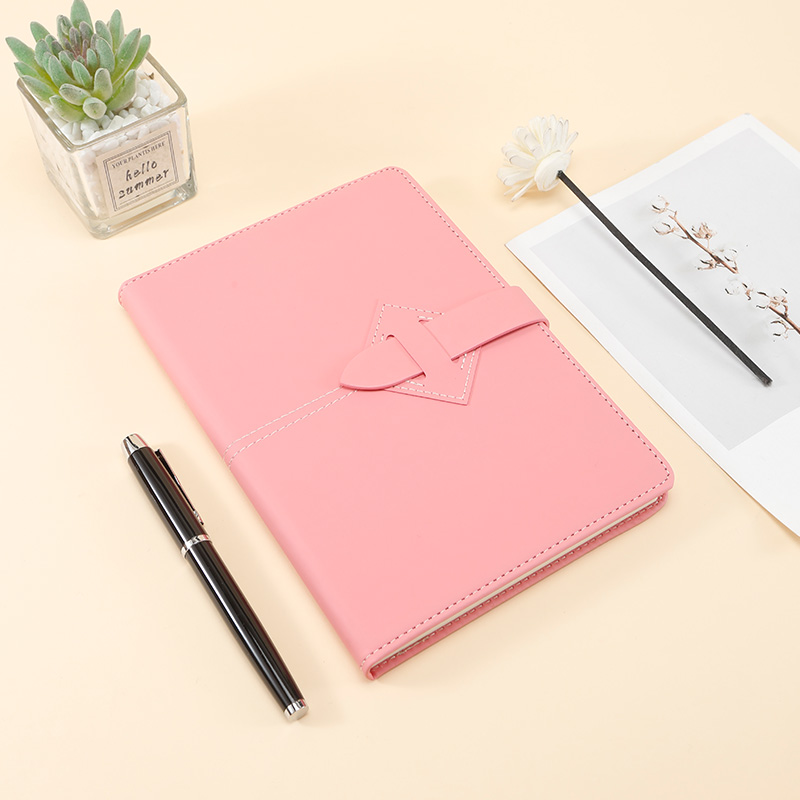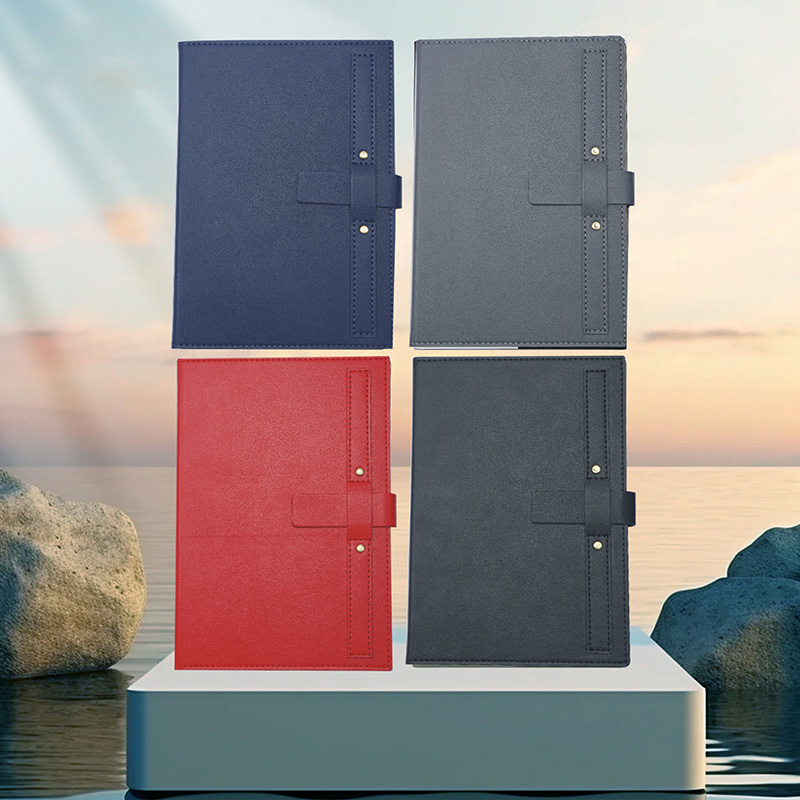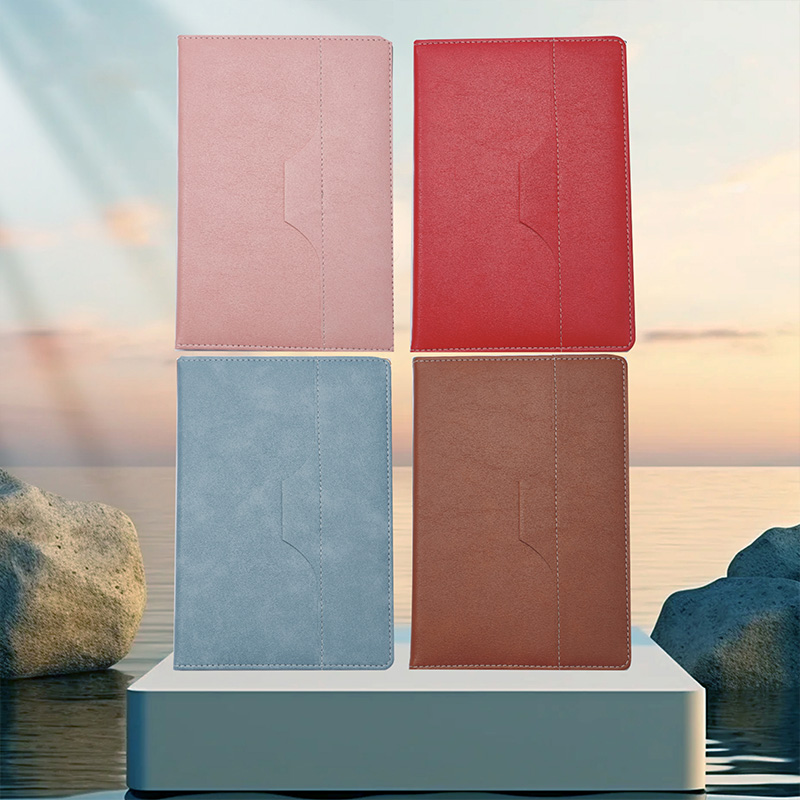What are the cover and paper materials of notebooks?
Posted by Admin
Notebooks come with a variety of covers and paper materials, each influencing factors such as durability, texture, writing experience, and overall appearance. Choosing the right combination can improve your daily use and match your specific needs.
1. Cover Materials
The notebook cover plays a key role in protecting the inner pages and contributes significantly to the notebook’s look and feel. Different materials offer different benefits and drawbacks:
Leather:
Leather covers are often favored for their natural texture and resilience.
Genuine Leather (such as cowhide or sheepskin): This type of leather tends to be soft and resistant to wear, developing a unique texture over time. It is frequently used for business or upscale notebooks due to its refined appearance.
Imitation Leather (commonly PU leather): This material is lighter, water-resistant, and more affordable. It offers decent protection for daily use but may show signs of cracking or peeling with long-term use.
Paper-Based Covers:
Cardboard with Lamination: This cover type is simple, lightweight, and commonly found in everyday notebooks.
Art or Specialty Paper: These covers may feature textures such as cloth patterns or embossed designs, providing a more artistic or tactile experience.
Cloth Covers:
Canvas or Cotton: These materials offer a soft, literary, or vintage style. It is advisable to use a protective sleeve or cover when carrying such notebooks.
Linen: Known for its natural appearance, linen is breathable and fairly durable, making it suitable for those who prefer a more organic look.
Plastic and Silicone Covers:
PVC Transparent Covers: Often used for loose-leaf notebooks, transparent PVC covers are waterproof and allow for creative customization of the inner pages.
Silicone Soft Shells: These covers provide a degree of shock absorption and protection, making them popular among students or those seeking more durable notebooks for daily handling.
Metal and Wood Covers:
Metal Covers (such as aluminum or brass) offer a sturdy and small industrial style. They provide good protection but tend to be heavier.
Wood Covers provide a natural texture and a unique aesthetic, often appealing to niche users who appreciate craftsmanship and originality.
2. Paper Materials
The choice of paper inside the notebook influences the writing feel and suitability for different pens and tasks:
Ordinary Writing Paper
Coated Paper: This type is smooth and thick, often used for notebooks with printed color pages, but its surface may not be ideal for writing.
High-End Writing Paper
Acid-Free Paper: Resistant to aging and discoloration, acid-free paper can last for decades without yellowing, making it suitable for archival purposes.
Thin, Resistant Paper: Some notebooks use ultra-thin paper that prevents ink from bleeding through, preferred by users who write with fountain pens or need a slim notebook.
Art Paper
Watercolor Paper: This paper is thick and textured, designed to absorb water-based paints without warping.
Sketch Paper: It has a matte surface that works well with pencil, charcoal, or other dry media, allowing for strong shading and expression.
Special Function Papers
Waterproof Paper: Made from synthetic materials, this type of paper is resistant to water and suitable for outdoor use or in humid environments.
Recycled Paper: Produced from recycled materials, this paper is eco-friendly but often rougher in texture. It is commonly used for draft work or casual note-taking.
Textured and Layout-Specific Papers
Dot or Graph Paper: These provide auxiliary guides to assist with precise layouts, making them useful for notes, diagrams, or design work.
Blank Paper: Offers freedom for freeform writing, drawing, or mind mapping without constraints.
How to Choose the Right Notebook Materials?
Selecting the right cover and paper depends on your intended use:
For business or formal use, leather or hardcover notebooks combined with acid-free paper may be preferable for durability and a professional look.
For handbooks or artistic journals, fabric or special textured paper covers combined with suitable artistic papers provide a pleasing tactile experience.
For outdoor activities or rough environments, waterproof covers and synthetic or waterproof paper are advisable to protect contents.
Fountain pen users often benefit from smooth, bleed-resistant paper such as acid-free or specialized thin paper designed for ink flow.
Students typically use smooth, cost-effective paper for everyday writing.
